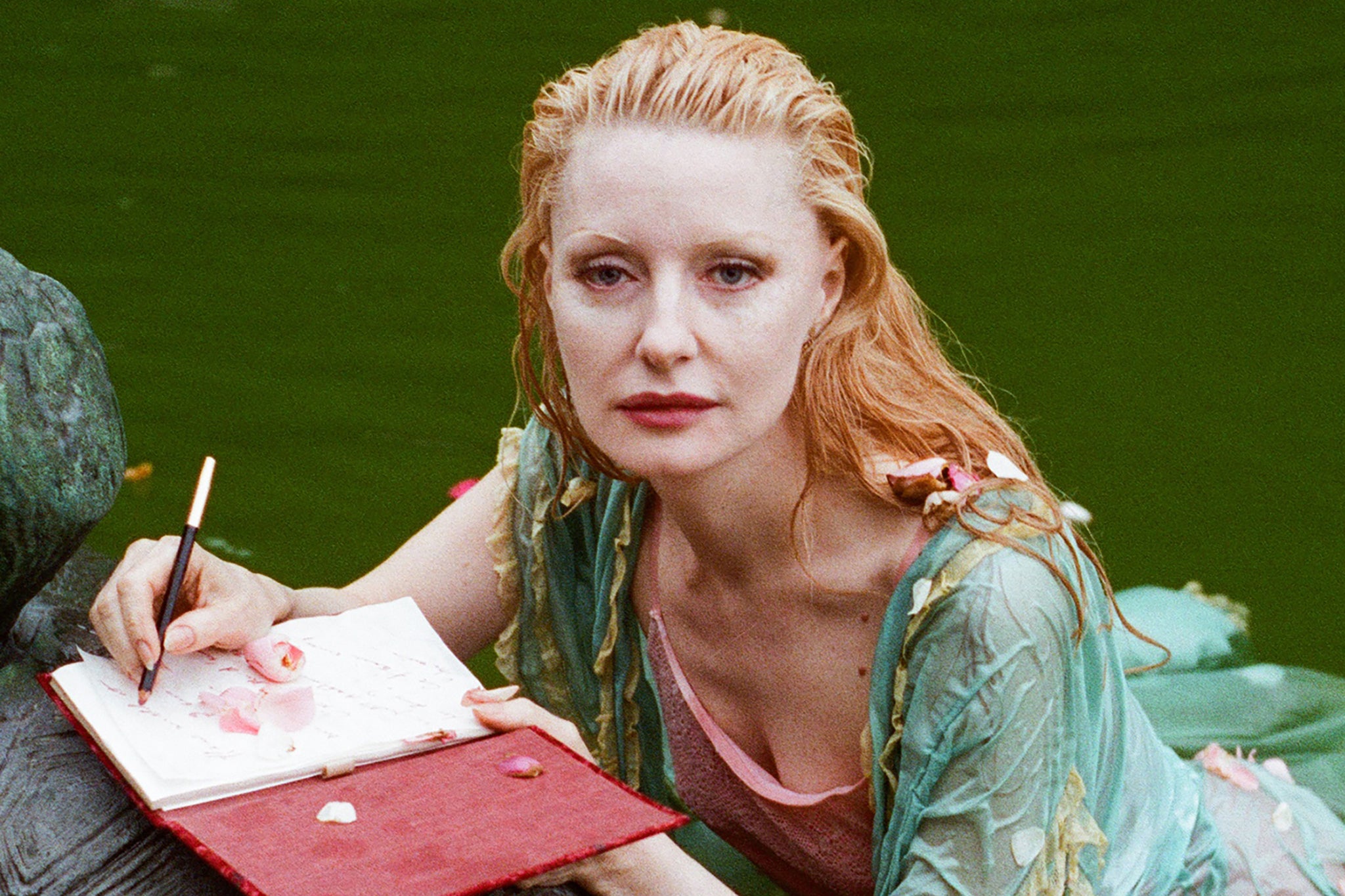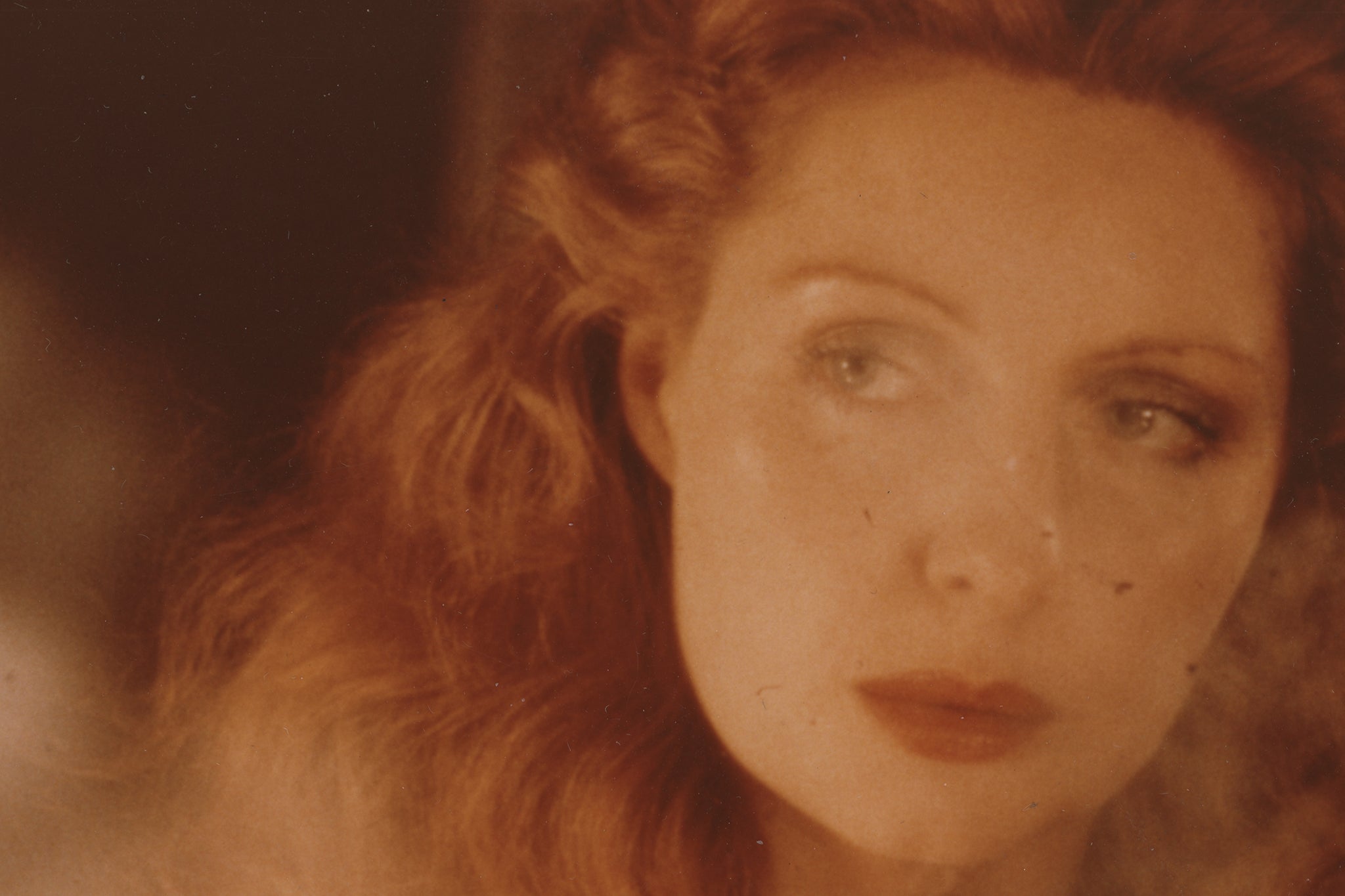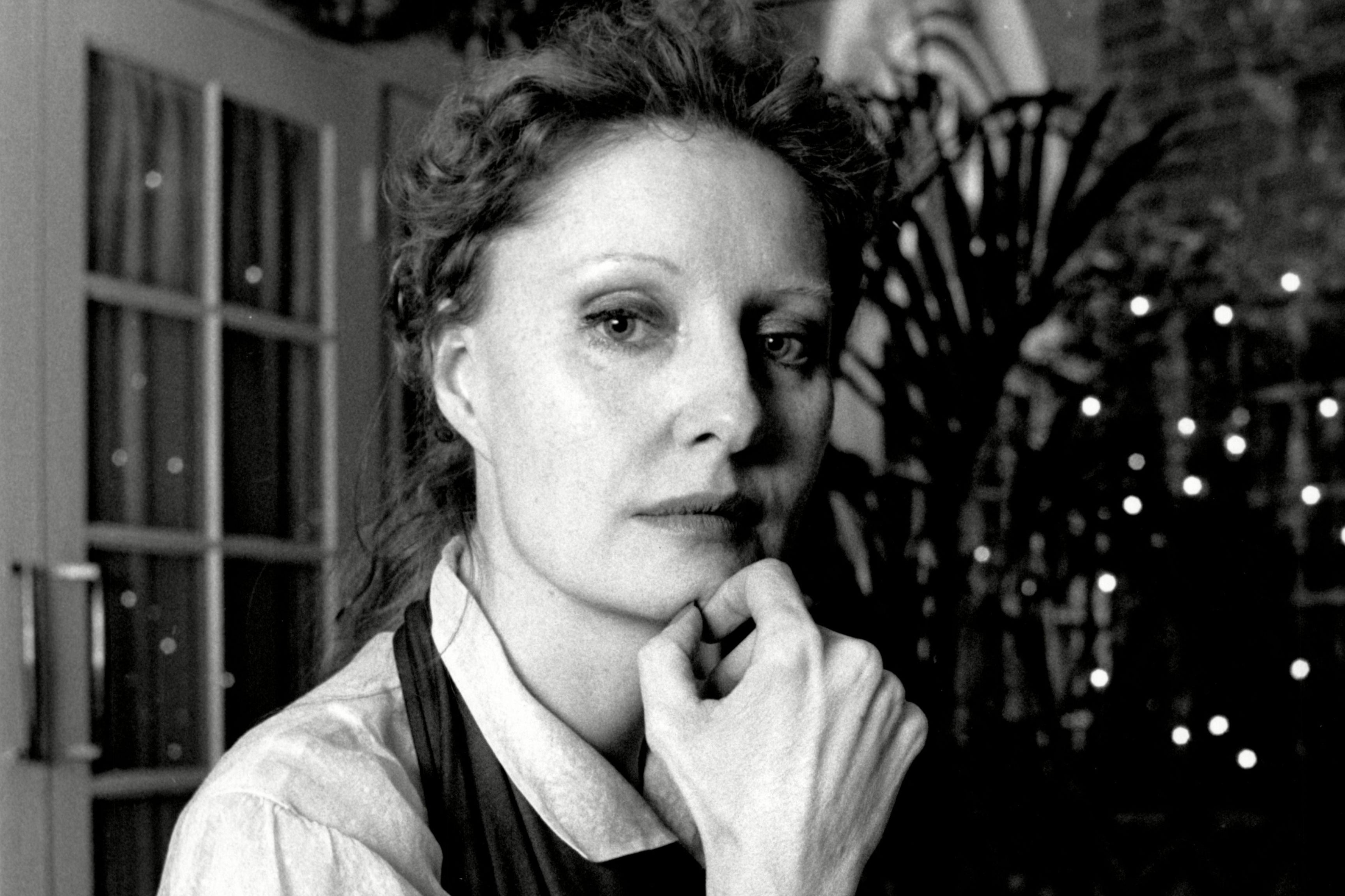Shere Hite revolutionalised female pleasure – so why did the world forget about her?
With her pioneering 1976 bestseller ‘The Hite Report’, a beautiful academic with a taste for glamour became one of the biggest names in sex and celebrity. A new documentary explores what happened next, from the scandal that dogged her to her eventual disappearance. Charlotte O’Sullivan meets its director

Your support helps us to tell the story
From reproductive rights to climate change to Big Tech, The Independent is on the ground when the story is developing. Whether it's investigating the financials of Elon Musk's pro-Trump PAC or producing our latest documentary, 'The A Word', which shines a light on the American women fighting for reproductive rights, we know how important it is to parse out the facts from the messaging.
At such a critical moment in US history, we need reporters on the ground. Your donation allows us to keep sending journalists to speak to both sides of the story.
The Independent is trusted by Americans across the entire political spectrum. And unlike many other quality news outlets, we choose not to lock Americans out of our reporting and analysis with paywalls. We believe quality journalism should be available to everyone, paid for by those who can afford it.
Your support makes all the difference.These days, it’s not unusual to see celebrities or fictional heroines discuss the joys of clitoral stimulation. Cara Delevingne in her BBC documentary, Planet Sex. Phoebe Waller-Bridge in Fleabag. Emma Stone in the Golden Globe-winning, Oscar-tipped Poor Things. Everyone’s at it. In the early Seventies, though, such diddling was frowned upon. A 1976 book by sexologist Shere Hite, titled The Hite Report, revolutionised how we think about female pleasure. The question asked by a new film: why isn’t Hite then a household name?
In The Disappearance of Shere Hite, director Nicole Newnham tracks the giddy rise of an intellectual with working-class roots. Hite was born in Missouri but, à la Holly Golightly, reinvented herself in New York. Hite wore bright lipstick, jackets with cinched waists and had Tamara de Lempicka hair. Conventionally gorgeous, she modelled for the likes of Playboy to fund a PhD in social history at Columbia. She eventually dropped the course, and the photo shoots, when she discovered feminism (Gloria Steinem, Kate Millett and Florynce Kennedy were pals).
Fired up by debates within the women’s movement, Hite decided more research was needed when it came to the female orgasm. She devised and sent out an idiosyncratic, 58-question survey, to which over 3000 American women anonymously responded. The majority of the women said they found it easier to climax by masturbating than by having conventional intercourse. They also shared their views on cunnilingus, vibrators and fake orgasms, exploring their fears and fantasies in a way that, even now, feels provocative and incredibly moving.
It was almost by chance that Hite’s findings were picked up by a major publishing house. According to Newnham, the bigwigs at Macmillan Adult Books were in “hot water” with US feminists at the time. In an attempt to improve their macho image, the head honchos had recently appointed Regina Ryan as the company’s first female editor-in-chief. Ryan and Hite were practically neighbours and, when their paths crossed, Hite mentioned her project. It was exactly the kind of book Ryan wanted to push, and her “edits” couldn’t have been lighter (it was her husband who suggested the title). The rest is history.
Though Macmillan “weren’t happy about it” (they seem to have done everything they could to stymie its success), the book became a bestseller. Still the 30th best-selling book of all time, it has transformed millions of lives. As we discover in the film, one contributor who’d written about her love of DIY orgasms casually showed her entry to a boyfriend. Not knowing she was the author, he said, “Gross!” (Reader, let’s hope she dumped him.)
Hite’s next two books (The Hite Report on Men and Male Sexuality; Women and Love: A Cultural Revolution in Progress) weren’t quite as successful. Even so, they kept Hite in the public eye and allowed her to buy an apartment on New York’s Fifth Avenue, which she decorated in grand style (she had a big thing for baroque).
There was a risk of portraying Shere as tragic, because of the intensity of the rise and fall aspect of the narrative. But I know she didn’t consider herself a victim
By the early Eighties, however, a backlash was underway. There was constant griping about Hite’s methodology, while her detractors dubbed her “anti-male” (even though thousands of men filled out her surveys and thanked her for allowing them to open up). When Hite went on Oprah Winfrey’s chat show, she had to face an audience made up entirely of angry dudes. Hite asked Janet Wolfe, a clinical psychologist and one of her best friends, to sit backstage. In a moment both poignant and comical and included in the documentary, we see Hite looking around and, with just the tiniest tremor in her voice, muttering: “Where’s Janet?”
Over the next decade, as the criticism and personal insults increased, Hite became “almost nocturnal”. Says Newnham, “it was almost like she was in retreat from anything to do with the social world. When she had to shift into these intensive periods when she was exposed to the media, it was really hard for her. One of Hite’s assistants would show up at Hite’s apartment, at 10am, and find notes telling her what to do during the day. She would see her boss at 5pm, for 40 minutes, before Hite left to do the interviews.”
Newnham gets annoyed when people ask why Shere continued to put herself through these trials-by-media. “She had to survive. She had debts to pay. And she had a message to deliver. She was extremely message-driven. So of course she kept going. Even though major news outlets were coordinating attacks on her.”

Hite’s conservative enemies wanted to crush her blithe vibe. It is riveting, as well as agonising, to watch them succeed. Determined to paint Hite as a rich bitch/hysterical harridan, they seized their moment, in 1987, when Hite failed to show up for a live interview, skipped a taped one and, that same evening, (allegedly) attacked her assigned limo driver when he called her “dear”. We see Hite ambushed on the TV show, A Current Affair, as interviewer Maury Povich explains his surprise guest is said chauffeur. Hite, with great dignity, says, “I would have liked to speak to the women in the audience”, and pulls off her mike. It’s when the cameras won’t stop filming that she flips.
In the months that followed, the toll on Hite’s mental health, says Newnham, was “enormous”. As well as having her next book turned down by publishers, she began to receive death threats that, obviously, she found “traumatic”. That said, Newnham never wanted to portray her subject as tragic. “That was a risk, because of the intensity of the rise and fall aspect of the narrative. But I know Shere didn’t consider herself a victim.”
That’s why Newnham was careful, too, when editing the section on Hite’s family. We learn that Hite’s father was barely in her life and that her mother – who was just 16 when she had Hite – was a tantalising presence. Hite, who was frequently sent to live with her squabbling grandparents or an aunt who lived in Florida, wrote that she often felt “worthless” as a child, like “a piece of garbage”.
Even as an adult, Hite was rebuffed. “When she was older she was in touch with her father, briefly, but not in a satisfying way,” Newnham says. “Her mom was just as inaccessible. You can see how that psychological wound affected Shere’s work and her life. How could it not? But I wanted to get the balance right, because I didn’t want viewers to spend their whole time psychoanalysing her.”

Which is not to say that her personal life wasn’t fascinating. “What drove Shere Hite, sexually? How was her sex life?” asks Newnham. “There’s a whole movie to be made about that. As a little girl, Shere had feelings that she was made to feel guilty about. Those feelings were, of course, natural. It made her realise how our ‘private’ lives are heavily impacted by politics. To her, sexuality was a fluid spectrum. And so was gender. She lived, herself, across that spectrum”. Hite said of one lover: “I can’t remember how we made love, but I remember the colours we made together.” Newnham was also impressed by a piece of Hite’s writing that explored her affair with a much older man. “It’s beautiful. She was a very young woman at that point, trying hard to liberate him from his own hang-ups and insecurities about his ageing body”.
Hite told a friend that she openly identified as bisexual. “Though she didn’t make that declaration on TV shows,” says Newnham, “and didn’t write as a bisexual woman, she did have relationships with women. I was aware of relationships she had but, for various reasons, none of these women wanted to be open about that on camera. Obviously, if an ex-lover had been willing to talk, I’d have included them.”
Hite was instinctively intersectional. In 1977, she paid for the activist, Kay Whitloc, to go down to Florida and oppose a homophobic campaign called “Save Our Children”, led by beauty queen and singer turned anti-gay activist Anita Bryant. “I was really excited to put that in the film,” notes Newnham, “because Kay just told me that in passing. It’s the kind of detail that would otherwise never be remembered by history. Anita Bryant was taking her beauty and leveraging it for this awful cause. I found it interesting to put her and Shere – these two high-profile female figures – side by side.”
It’s no surprise to learn a biopic about Hite is in the works. It should be easy to cast, because, right to the end, there was something so “actressy” about Hite (Greta Gerwig, Jessica Chastain, Cate Blanchett, Patricia Clarkson; any one of these superstars would be perfect in the lead).
Blanchett and Clarkson, of course, will only get a look in if the fictional film devotes space to Hite’s later years. Effectively forced into exile, Hite renounced her US citizenship in 1995. She moved to Germany with her first husband, Friedrich Horicke, eventually settling in London with her second husband, Paul Sullivan (she had a house in Tottenham). Hite was able to get her books published in Europe, and continued to have a media profile. She did shoots with French photographer Iris Brosch that showed Hite larking around in front of the Eiffel Tower and wearing see-through tops.
Newnham thinks it was playful and “punk” of Hite to celebrate her body by posing semi-nude. “I think it’s radical that these stunning photos were taken in Shere’s mid-fifties. She harnessed these kinds of images, which usually show young women as the object, and appropriated them for herself.”

That said, Newnham admits Hite’s boho-bombshell image came at a price. “I know she spent a lot of time maintaining the way she looked. Increasingly so, as she got older. There were exercises. Diets. Some of her feminist friends, from back in the day, had a hard time reconciling that with her politics. Some took me aside and said, ‘You know, she wasn’t taken very seriously in the movement, because of the way she looked’”. (In case you’re wondering, Gloria Steinem isn’t one of the talking heads; she turned down Newnham’s interview request, but only because “she’s dealing with some health issues.”) Adds Newnham: “A couple of her friends said they felt sad, because Shere had to go to such extreme lengths to maintain her beauty.”
Hite’s in-your-face aesthetic, apparently, was just as controversial among men. In the mid-Eighties, when Hite went back to Columbia University in the hopes of finishing her PhD, she was treated as an outsider by her mostly male peers. Newnham interviewed a sociologist, now living in Ireland, who said, “We were all living in a post-Shere Hite world. All of us had read The Hite Report and we had all used it to have better relationships with our girlfriends. It fundamentally changed the structure of our society. Yet we were all tittering in this grad school seminar, saying ‘Why does she wear that funny make-up and those funny outfits?’”
Hite, who died in 2020, age 77, spent her whole life battling to be understood. Maybe that’s why Newnham is so protective of her subject and so keen to win her new fans. “The programmers at the Sundance Film Festival got excited when they saw [it]. They said, ‘In a few years, we’ll see young women dressing up as Hite at Halloween!” Newnham laughs. “That may sound trivial. But it would mean that, as a cultural icon, she’d been reclaimed.”
‘The Disappearance of Shere Hite’ is in cinemas
Join our commenting forum
Join thought-provoking conversations, follow other Independent readers and see their replies
3Comments